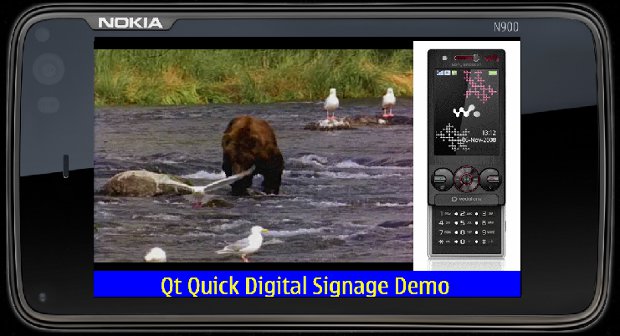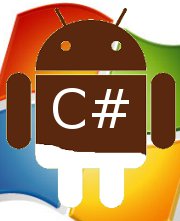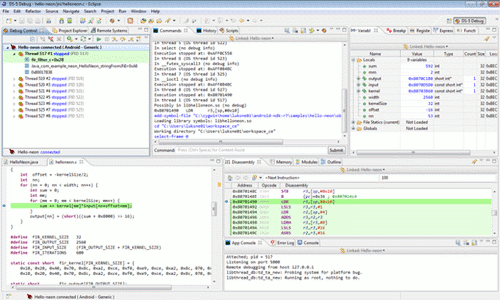UBM Design announced the schedule and pass pricing for Design West Summit (previously Embedded System Conference) which will now bring 7 summits in one location (San Jose McEnery Convention Center) on 26-29 March 2012: Embedded Systems Conference & Exhibition – Conference Dates: March 26 – 29, 2012. Exhibition Dates: March 27-29, 2012. (See Details below) Android Summit – March 28, 2012 – Everything Android from embedded design to Apps development. Android Certification Program Android Speed Training Android Fundamentals Course on the Expo Floor Android Conference Program Multicore DevCon– March 27 & 28, 2012 – Embedded multicore and multimedia. 7th annual Multicore Conference Courses Multicore Expo Floor Zone Multicore Fundementals Courses Keynote Addresses Industry Addresses Expo floor parties and giveaways BlackHat – March 29, 2012 – One-day conference focused on security in embedded systems. Security Fundementals Course Black Hat Summit Conference Courses Security focused presentations in the expo floor theater Keynotes […]
Qt Quick QML Digital Signage Demo Part 1
I’ve recently started to play around with Qt and since I’d like to do a digital signage player running on Raspberry Pi, I’ve decided to try to make a simple digital signage demo application to evaluate the development platform. In Part 1, my goal was to make a 3 zones layout with a video zone, a picture zone and a scrolling text zone. I would just play one hard-coded media in each zone and the video and scrolling text would have to continuously loop. I used Qt Creator to create a “Pigital Signage” application (or should it be Πgital Signage ?). To create the 3 zones I used the Gridview Element with 3 rectangles: Video zone: 600×432 Picture zone: 200×432 Text zone: 800×48 Displaying the image is very easy with the Image Element:
|
1 2 3 |
Image { source: "pic/phone.jpg" } |
The video playback was also supposed to be easy with the Video Element but it can […]
Mono for Android 4.0 (.NET Framework)
Xamarin has provided .NET support for Linux via the Mono project for a while. It has recently announced the availability of an Android 4.0 version of its Mono software in order to let .NET and C# developers use Microsoft Visual Studio to build Android applications. Mono for Android follows upon Xamarin’s MonoTouch framework for iOS (iPhone and iPad development) and consists of a plug-in for Microsoft Visual Studio, a core Mono runtime, a Software development and bindings for native Android APIs. Such software is designed to leverage existing .NET applications, libraries and tools for Android development. With Mono for Android, developers can also call upon their native skills in .NET and the C# programming language in developing Android apps. Xamarin says that Mono for Android 4.0 provides access to all the new features, native APIs and UI toolkits in Android 4.0. Mono for Android 4.0 brings those key improvements and […]
Nokia Developer Day 2: Qt QML Workshop – Chiang Mai
I’ve just attended Nokia Developer Day on 6-7 December 2011 in Chiang Mai. I’ve already written a summary about the first day dealing with Series 40 Java and Web Apps Workshop. The second day was focused on Qt/QML (Qt Meta-Language) software development for Nokia’s Symbian phones. Nokia will phase out Symbian operating system in 2016, but they’ll still support it until that time. Nokia will also port Qt to lower end phones (e.g. Series 40) on a new operating system based on Linux called Meltemi. Overall Business Direction & Strategy The first 45-minutes for was presentation given by Grant Aaron McBeath, Managing Director, Nokia Thailand and Emerging Asia, about Nokia business direction: focus on Windows Phone for smartphones, Java/Web Apps for feature phones and future disruption. He also showed the progress of Nokia Ovi Store with 10 million downloads a day and 177 publishers with more than 1 million downloads. […]
Nokia Developer Day 1 Summary – Chiang Mai
I’ve just attended the first day of Nokia Developer Day (6-7 December 2011). The focus was on software development for Nokia’s feature phones with Java or Web Apps (HTML/CSS/Javascript) and most of the time was spent on workshops to get started for developing for Nokia feature phones such as the S40 series. Introduction to Ecosystem Business Updates During the first 15 minutes, an “Introduction to Ecosystem Business Updates” was given by Jirapat Janjerdask, Head of the Ecosystem Developer Experience at Nokia Thailand. He gave an overview of the ecosystem for features phones including the brand, developer & publisher, mobile brand, mobile operator and consumer. One interesting statistics was that there are 10 millions app downloads every single day. He also talked about the new Nokia Asha 300 and 303 features phones available for 3000 to 4000 Thai Baht (100 to 130 USD) that are capable of running applications that usually […]
ARM Releases Free DS-5 Community Edition For Android Developers
ARM announced a free version of its Eclipse-based DS-5 tools for small development firms (with 10 or fewer developers) and individuals who publish applications for Android. The ARM Development Studio 5 (DS-5) Community Edition (CE) helps create performance- and power-optimized native software by integrating a graphical debugger for code generated for the Android Native Development Kit (NDK) and a basic version of the ARM Streamline performance analysis tool. DS-5 CE is designed to work with Android Virtual Devices ( AVDs), development boards and devices that run Android 2.2 and API 8 or higher. ARM Development Studio 5 (DS-5) Community Edition is distributed as plug-in for Eclipse and completes the app developer toolkit with a C, C++ and Assembly graphical debugger that builds on the Android Debug Bridge (ADB), a software performance profiler and system analyzer (ARM Streamline). To get started, you’ll need Eclipse IDE, the Android SDK and the Android NDK […]
Nokia Developer Day in Chiang Mai – 6-7 December 2011
Nokia Developer Day will take place at Kantary Hills in Chiang Mai, Thailand on the 6 & 7 December 2011. A Separate event will also take place in Khonkaen on the 8 & 9 December 2011. Here’s the agenda for the 2 days event in Chiang Mai: Day 1 – 6th of December: 08:45 – 09:15 – Registration 09:15 – 09:30 – Introduction to Ecosystem Business Updates 09:30 – 09:50 – Development possibilities on Nokia Platforms 09:50 – 12:30 – Introduction of Series 40 Java – Touch & Type with hands-on exercises. 12:30 – 13:30 – Lunch 13:30 – 16:00 – Series 40 Web Apps for the next billion with hands-on exercises. 16:00 – 17:00 – Social Media Marketing Training 17:00 – Q&A Day 2 : 7th of December 08:45 – 09:15 – Registration 09:15 – 10:00 – Overall business direction 10:00 – 12:00 – Introduction to Qt Quick (QML) […]
ARM NEON Tutorial in C and Assembler
The Advanced SIMD extension (aka NEON or “MPE” Media Processing Engine) is a combined 64- and 128-bit single instruction multiple data (SIMD) instruction set that provides standardized acceleration for media and signal processing applications similar to MMX, SSE and 3DNow! extensions found in x86 processors. Doulos has a video tutorial showing how you can exploit NEON instructions in assembler, how to modify your C code and provides the compile options for gcc to enable NEON during the build. Abstract: With the v7-A architecture, ARM has introduced a powerful SIMD implementation called NEON™. NEON is a coprocessor which comes with its own instruction set for vector operations. While NEON instructions could be hand coded in assembler language, ideally we want our compiler to generate them for us. Automatic analysis whether an iterative algorithm can be mapped to parallel vector operations is not trivial not the least because the C language is […]







